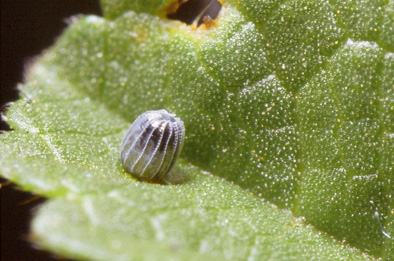Painted Lady
Vanessa cardui
Family: Nymphalidae
Subfamily: Nymphalinae
Identification: Upperside is orange-brown with darker wing bases; forewing with black apex patch and white bar on leading edge; hindwing submarginal row of 5 small black spots sometimes has blue scales. Underside has a black, brown, and gray pattern with 4 small submarginal eyespots.
Life History: Males perch and patrol during the afternoon for receptive females. In the West males usually perch on shrubs on hilltops, while in the East males perch on bare ground in open areas. Females lay eggs singly on the tops of host plant leaves. Caterpillars live in silk nests and eat leaves. Adults hibernate only in the South and in mild winters.
Wing Span: 2 - 2 7/8 inches (5.1 - 7.3 cm).
Caterpillar Hosts: More than 100 host plants have been noted; favorites include thistles (Asteraceae), hollyhock and mallow (Malvaceae), and various legumes (Fabaceae).
Adult Food: The Painted Lady prefers nectar from composites 3-6 feet high, especially thistles; also aster, cosmos, blazing star, ironweed, and joe-pye weed. Flowers from other families that are visited include red clover, buttonbush, privet, and milkweeds.
Habitat: Almost everywhere, especially in open or disturbed areas including gardens, old fields, dunes.
Range: On all continents except Australia and Antarctica. From the deserts of northern Mexico, the Painted Lady migrates and temporarily colonizes the United States and Canada south of the Arctic. Occasionally, population explosions in Mexico will cause massive northward migrations. Comments: The Painted Lady is also known as the Thistle Butterfly because of the caterpillars' food preference and also as the Cosmopolitan because it is the most widely distributed butterfly in the world.




